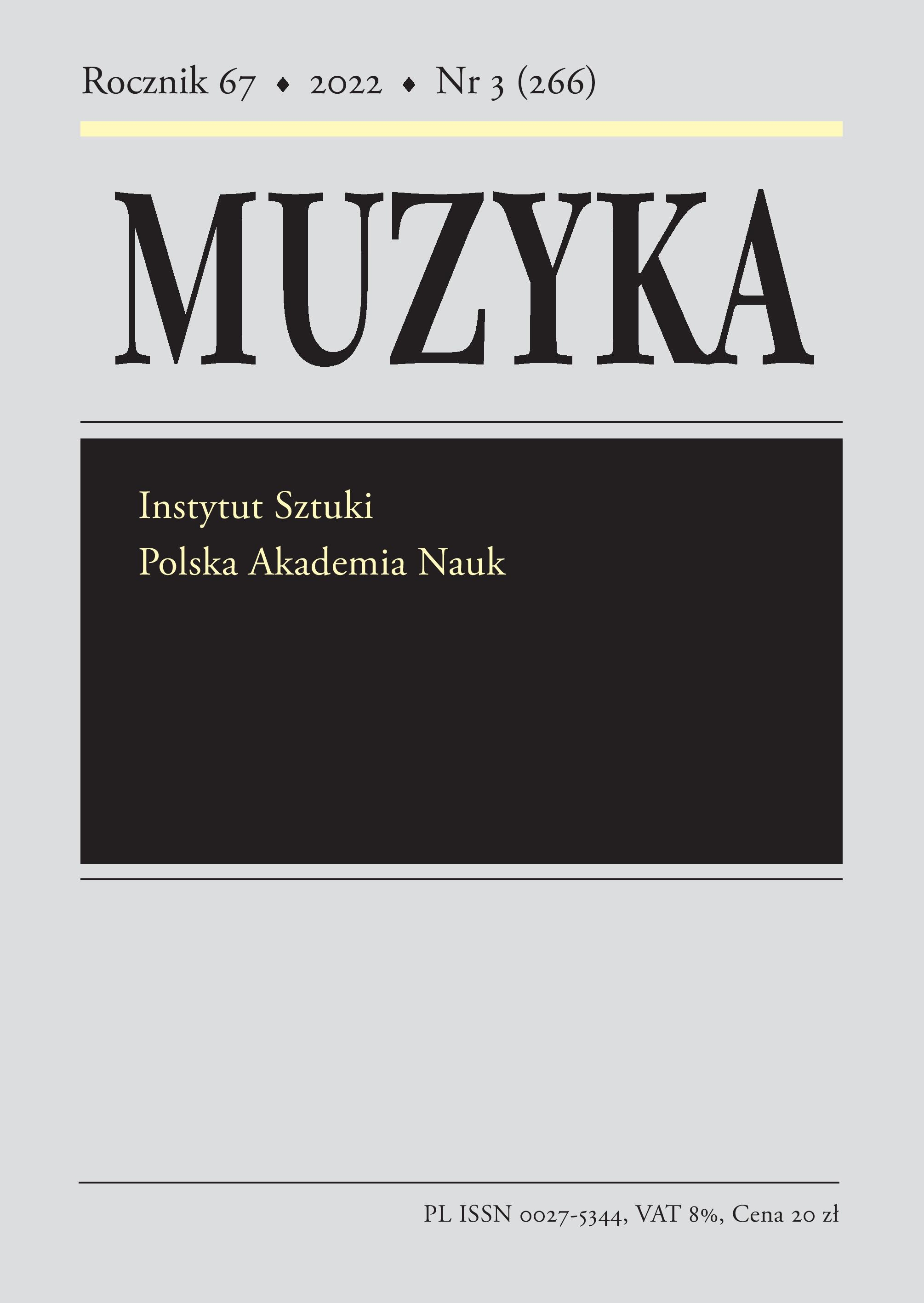Między „tekstami” – analiza związków słowno-muzycznych w „Not I” Agaty Zubel
Between the ‘Texts’: An Analysis of Verbal-Musical Relations in Agata Zubel’s ‘Not I’
Author(s): Katarzyna KuryłekSubject(s): Music, Poetry
Published by: Instytut Sztuki Polskiej Akademii Nauk
Keywords: Agata Zubel; Samuel Beckett; Michał Bristiger; twenty-first-century music; musical qualities in literature; sound; contemporary vocal techniques; Polish music
Summary/Abstract: The aim of this paper is to analyse the composition ‘Not I’ by Agata Zubel, one of the most prominent and significant Polish women composers of the middle generation, with respect to verbal-musical relations. My research method has been inspired by Michał Bristiger’s findings resulting from the assumption that a proper understanding of vocal-instrumental music calls for the application of a double perspective: musical and linguistic. I therefore analyse the two ‘texts’ distinguished by Bristiger, which together make up the composition as an organised whole, i.e. the original literary text and its transformations for the needs of the musical piece, interpreted here as an element of the artistic whole, as well as the so-called ‘great verbal-musical text’, that is, the work in its entirety. In the context of Beckett’s dramatic monologue under study, elements of the work’s formal structure have been discussed along with stylistic tools that define the overall characteristics of the writer’s manner of expression, as well as the main thematic elements of the work, with an attempt to interpret its symbolic meanings. A formal analysis of the composition has also been performed, indicating the sound structures present in the piece and the composition techniques it applies. The analysis also takes advantage of linguistic tools. The key motifs appearing in the literary text under study, referred to in Algirdas Julien Greimas’ semantic theory as semiological classes, have been indicated. This made it possible to point to certain semantic universals in the literary model, which come close to the semantic universals of the music and are at times identical with the latter.
Journal: Muzyka
- Issue Year: 67/2022
- Issue No: 3
- Page Range: 114-136
- Page Count: 23
- Language: Polish

